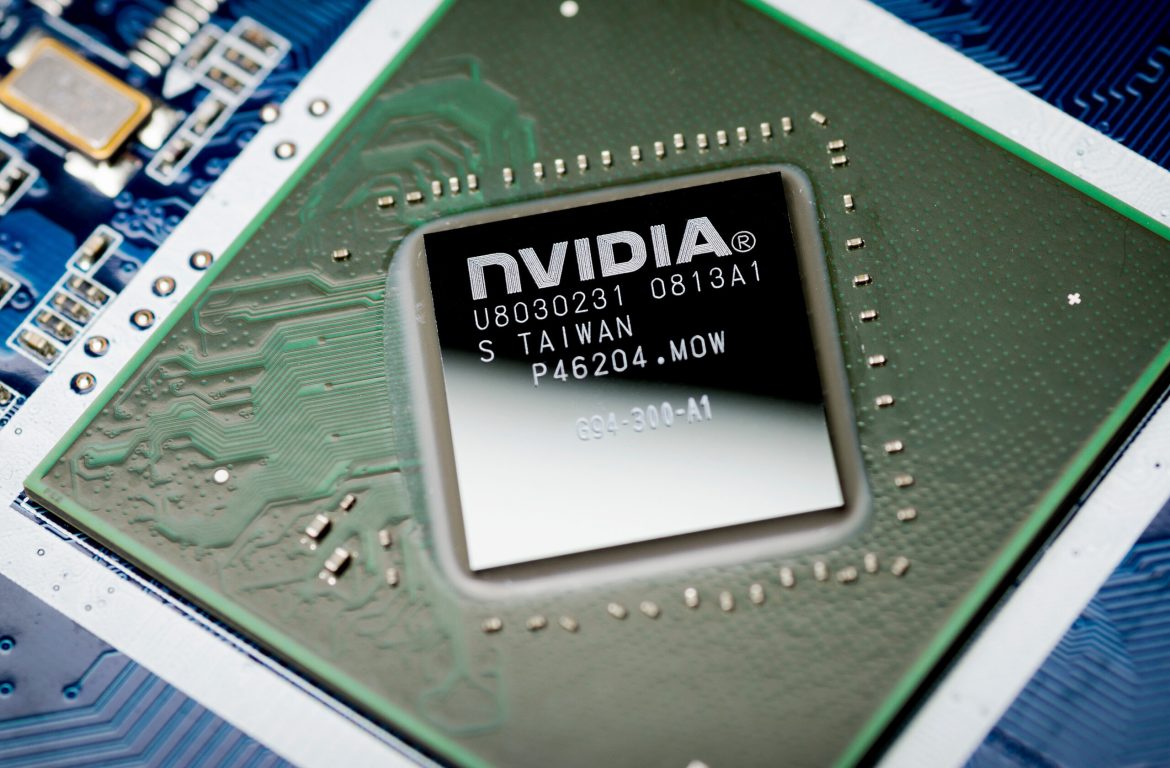Nvidia stock struggled for direction on Wednesday as growing optimism around Advanced Micro Devices’ (AMD) long-term prospects in artificial intelligence reignited debate over whether Nvidia’s dominance in the AI chip market could soon face a credible challenge.
Shares of Nvidia were up 1.4% to $195.95 in premarket trading, paring back losses after falling nearly 3% on Tuesday following SoftBank Group’s disclosure that it had sold a $5.83 billion stake in the company.
At the time of writing, the Nvidia stock is down around 0.4%.
The stock remains under scrutiny ahead of its earnings report scheduled for November 19.
At the same time, AMD surged more than 9% on Wednesday to $260.77, buoyed by its announcement of aggressive long-term growth projections tied to AI hardware demand.
AMD targets $1 trillion AI data centre market
In its latest forecast, AMD said it expects to grow annual revenue by more than 35% over the next three to five years, driven primarily by AI processors and data-centre products.
The company’s executives now see the total market opportunity for AI data-centre components reaching $1 trillion by 2030, up from a prior estimate of $500 billion by 2028.
The announcement, which sent AMD shares sharply higher, came as investors have been seeking alternatives to Nvidia amid concerns about the latter’s stretched valuations and export restrictions on its most advanced AI chips.
Benchmark Research analyst Cody Acree drew parallels between AMD’s growing position in AI and its earlier rise against Intel in CPUs.
“We believe AMD’s current AI position versus Nvidia is very analogous to its earlier competition with the previously dominant CPU supplier, Intel, where AMD steadily and methodically chipped away at Intel’s market share through many years of increasingly competitive designs and a consistently aggressive development roadmap,” Acree wrote in a note to clients.
The comparison underscores how AMD’s ability to deliver competitive, cost-efficient designs could eventually erode Nvidia’s commanding market share, particularly as hyperscalers and cloud providers seek to diversify their chip suppliers.
While most analysts welcomed AMD’s revised guidance, opinions remain split on whether the company can meaningfully disrupt Nvidia’s near-monopoly in AI chips.
Some believe Nvidia’s technological lead, entrenched developer base, and advanced software stack—especially its CUDA platform—will remain formidable barriers to entry.
Nvidia still commands the AI battlefield
Despite AMD’s strong momentum, Nvidia remains the undisputed leader in the global AI hardware ecosystem, controlling more than 80% of the market for data-centre GPUs.
The company’s upcoming earnings will provide a clearer picture of how well it has sustained demand in the face of intensifying competition and geopolitical headwinds.
Nvidia continues to benefit from deep partnerships with major suppliers such as Foxconn Technology Group, which on Wednesday reported a 17% year-over-year increase in third-quarter profit, driven largely by AI infrastructure demand.
Foxconn—best known as Apple’s main contract manufacturer—said AI servers accounted for 42% of its total revenue, overtaking consumer electronics as its largest segment for the first time.
The Taiwan-based firm, also known as Hon Hai Precision Industry, said cumulative AI server revenue reached NT$1 trillion ($32.2 billion) by the end of September.
Nvidia and Foxconn are collaborating on several AI hardware initiatives, reflecting the continued strength of Nvidia’s ecosystem even as rivals gain some ground.
The post Nvidia stock is in the red on Wednesday: is AMD becoming a major threat? appeared first on Invezz
